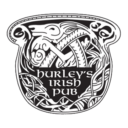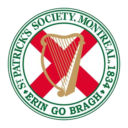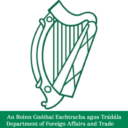Gaelic football is an Irish team sport. It is a form of football derived from traditional Irish ball games.
It is typically played between two teams of 15 players on a rectangular grass pitch, although here in North America we play smaller sized games to suit the smaller sports facilities available.
Positions in Gaelic football are similar to that in other football codes, and comprise one goalkeeper, six defenders, two midfielders, and six forwards, with a variable number of substitutes. These numbers will change depending on the size of the field available.
Typically, we play with seven a side when playing indoor during the winter, and nine a side when playing outdoors during the summer and autumn months.
How to Play
- Unlike in soccer, where players from each team line up in their own half, Gaelic Football players start a game positioned on either side of the half, and pair themselves with an opposing team’s player. For example, the midfielders from each team will line up together at the centre-line of the field. The forwards will position themselves in front of the opposing team’s goal, and the fullbacks will line up beside the opposing team’s forwards. Defensively speaking, you are now paired with a player from the opposing team, and you will be “covering” that person for the duration of the game
- The game begins with a jump ball between all four midfielders in the centre.
- The ball may be held in the hands, however if the ball is on the ground, player must scooped the ball up into the hands by the foot
- Players are given only four seconds or four steps to advance the ball.
- Players can pass the ball by kicking it, or by striking it with one hand while holding the ball in the other (a hand-pass). The ball may not be thrown.
- After four steps, the player may bounce the ball (this bounce is called a “hop”) and take four more steps, kick-pass the ball or hand-pass the ball.
If the player chooses to take four steps after bouncing, they must kick the ball back to themselves (called a solo) after the 8 steps, creating a sequence of four steps-bounce-four steps-solo-four steps-bounce-four steps-solo. etc.
Tackling
- Players may jostle, or shoulder-to-shoulder charge, an opponent when racing to win a loose ball, or when trying to knock an opponent off the ball
- A player may try to knock the ball out of an opponents grasp by hitting it with one of their hands. It is important to play the ball in this case, as striking the opponent is a foul
How to score
In the game, two types of scores are possible: points and goals.
- A point is awarded for kicking or hand-passing the ball over the crossbar, signalled by the umpire raising a white flag.
- A goal is awarded for kicking the ball under the crossbar into the net, signalled by the umpire raising a green flag.
Gaelic football is the most popular sport in Ireland in terms of attendance, with the 2019 All-Ireland Senior Championship Final, held at Croke Park, Dublin, drawing an attendance of 82,300 people. Outside of Ireland, football is mainly played amongst members of the Irish diaspora, but has proven itself popular with the locals – the 2019 world Gaelic Games saw 85 teams from around the world battling for four days in hurling, camogie and football, and of which 60% of the players were not born in Ireland.
Here in Montreal, Gaelic games are quite popular, with the city playing host to a yearly tournament each May, with teams from all over Eastern Canada and parts of the United States travelling to compete. On top of that, Ottawa, Quebec, and Toronto will all host tournaments through the summer months, and there is an Eastern Canadian Championship, run the the Eastern Canadian GAA board, which changes location every year.








